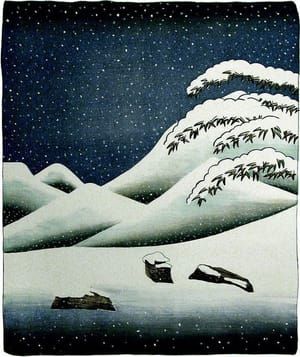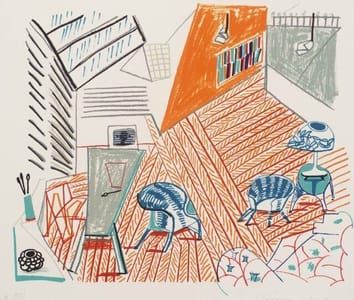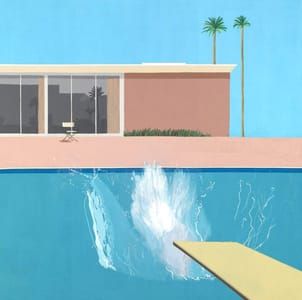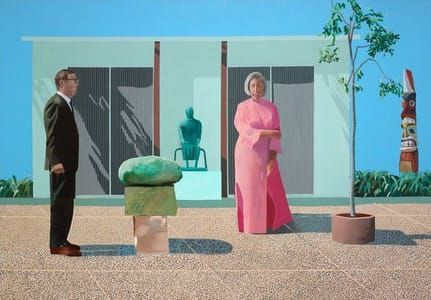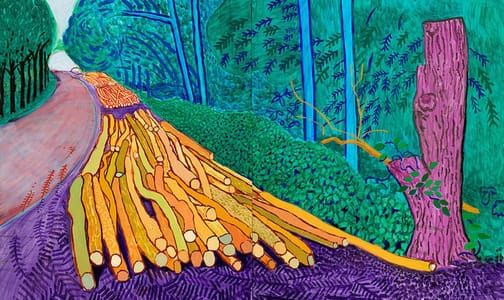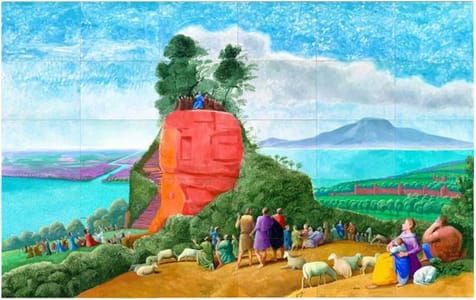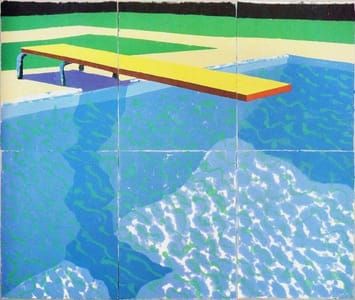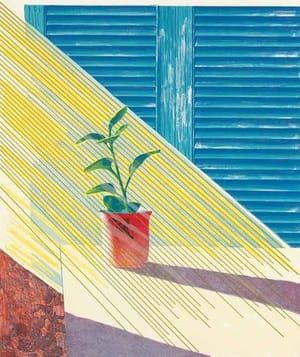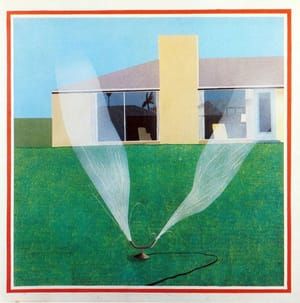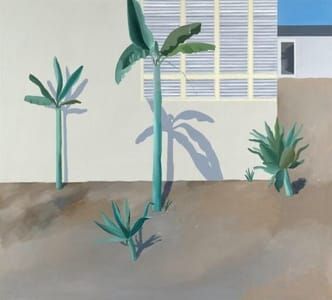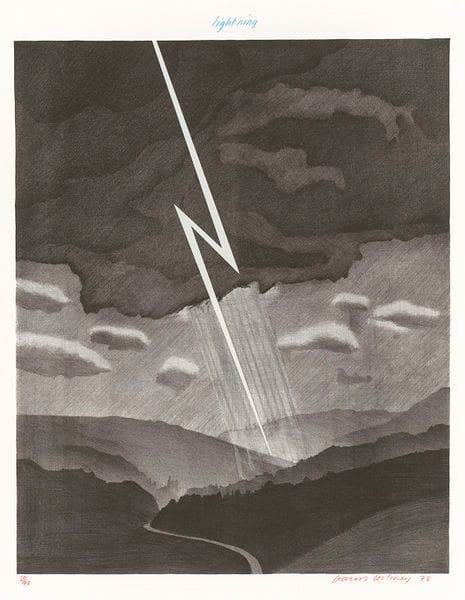

Lightning (From The Weather Series), 1973
David Hockney
"I loved the idea of the rain as it hit the ink [and] it would make the ink run. The moment I thought of the idea I couldn't resist it."—Hockney, 1973
In tackling weather as a subject, David Hockney (British, born 1937) looked to 19th-century Japanese u-kioye woodblock prints by Katsushika Hokusai and impressionist paintings by Claude Monet. Both artists depicted a wide range of atmospheric and lighting conditions in serial formats—Hokusai most famously in his prints of Mount Fuji and Monet in his well-known paintings of grain stacks, Rouen Cathedral, and other subjects. Hockney’s Snow, in which repetitive horizontal bands of tonal gradation suggest spatial recession, is most explicitly indebted to Japanese woodcuts, while the hazy silhouettes of Hockney’s Mist recall Monet’s painting of poplar trees on the River Epte
Hockney’s Wind illustrates the serial relationship between The Weather Series prints, as Snow, Mist, Sun, and Rain are shown whirling in a Los Angeles gust.
(https://www.nga.gov/content/ngaweb/features/the-serial-impulse/david-hockney.html)
David Hockney first visited California in 1964 and visited and worked there from time to time until he decided in 1978 to settle there permanently. In 1965 he worked on A Hollywood Collection, a suite of prints, with master printer Ken Tyler, who ran the printmaking studio Gemini GEL. Although he made other prints with Gemini in the years between 1965 and 1973, The Weather Series was the second major suite made there. It is in part inspired by the representation of weather in Japanese prints. This image however also suggests 18th and 19th century European depictions of landscape and weather, with overtones of the caricature style of Hogarth.
(https://collections.vam.ac.uk/item/O148033/lightning-print-hockney-david/)
Uploaded on Aug 15, 2017 by Suzan Hamer
David Hockney
artistArthur
Wait what?
